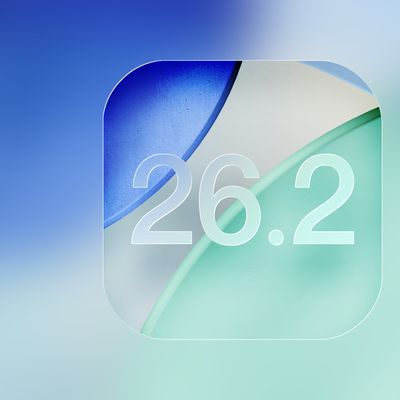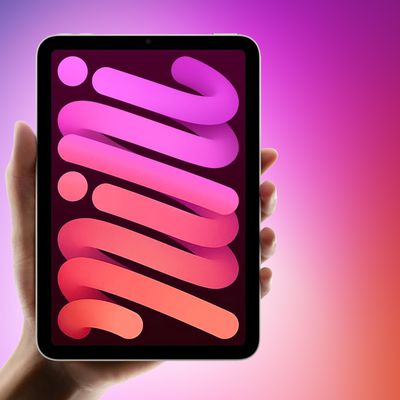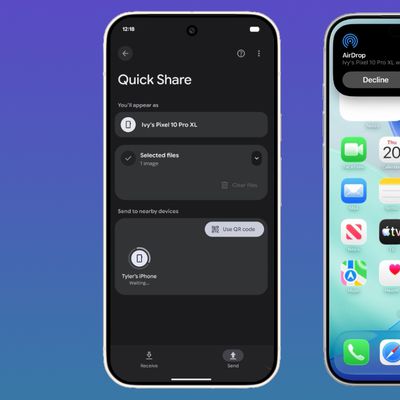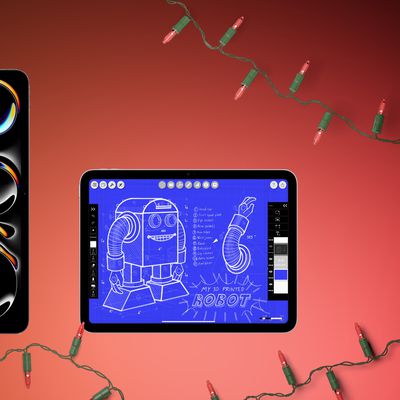MacBook Air Display Upgrade in 2027 Could Bring Major Quality Boost
Apple's M5 MacBook Air is expected to arrive in the first quarter of 2026 with predictable improvements, including faster CPU performance, a more capable GPU, and likely slightly better battery life. But earlier reports out of Korea suggest Apple has been working on something more interesting that could debut two years out.

According to The Elec, Apple plans to equip the MacBook Air with Oxide TFT LCD displays in 2027, replacing the current amorphous silicon panels. The technology promises better power efficiency, faster pixel response times, and more uniform brightness distribution across the screen.
Oxide TFT panels are designed to deliver sharper images with less motion blur during video playback or gaming sessions. The improved backlight consistency could also go some way to eliminating the "clouding" effect that sometimes appears on current LCD displays (an effect that's especially noticeable when viewing dark content).
It's an intriguing – some might say unexpected – strategy for Apple, given that most rumors fixate on OLED technology arriving in MacBooks. For example, we've seen several reports claiming the MacBook Pro line will adopt OLED in late 2026 or 2027. But Apple appears committed to advancing LCD technology for its most popular laptop.
Apple's decision could make sense for a couple of reasons. OLED manufacturing capacity remains constrained, and Apple likely needs to reserve initial production for higher-margin Pro models. Also, by investing in advanced LCD rather than rushing to OLED, Apple can keep a clear differentiation between the two laptop lines.
There's no doubt Apple's M5 chip will make next year's MacBook Air faster. But the Oxide TFT display could make the 2027 model genuinely better in ways users actually notice during everyday use, such as smoother scrolling and more consistent image quality.
Popular Stories
Apple's annual four-day Black Friday through Cyber Monday shopping event is returning on Friday, November 28 through Monday, December 1 in many countries, including the United States, Canada, Australia, New Zealand, France, Germany, Italy, Spain, the United Kingdom, Belgium, the Netherlands, Sweden, Thailand, and others.
During the shopping event, customers can get an Apple gift card with...
Apple's iPhone development roadmap runs several years into the future and the company is continually working with suppliers on several successive iPhone models at the same time, which is why we often get rumored features months ahead of launch. The iPhone 18 series is no different, and we already have a good idea of what to expect for the iPhone 18 Pro and iPhone 18 Pro Max.
One thing worth...
iOS 26.2 is currently in beta testing. The upcoming update includes a handful of new features and changes on the iPhone, including a new Liquid Glass slider for the Lock Screen's clock, offline lyrics for Apple Music, and more.
In a recent press release, Apple confirmed that iOS 26.2 will be released to all users in December, but it did not provide a specific release date.
Keep reading...
Apple has begun selling the Hikawa Phone Grip and Stand, a new limited-edition iPhone accessory designed with accessibility in mind.
Designed by LA-based Bailey Hikawa to celebrate the 40th anniversary of accessibility at Apple, the grip uses magnets to securely snap onto any iPhone with MagSafe.
Apple says it can be removed with ease, and doubles as a stand with two different viewing...
Apple's eighth-generation iPad mini is highly likely to arrive next year, offering a significant refresh of the device with at least four major new features.
OLED Display
The next-generation version of the iPad mini could feature an OLED display, as part of Apple's plan to expand the display technology across many more of its devices. Apple's first OLED device was the Apple Watch in 2015, ...
Apple today announced an expansion of AppleCare+ coverage in India, with new options for monthly and annual plans, and the addition of Theft and Loss for iPhone for the first time.
Options for monthly and annual AppleCare+ plans in India provide more choice and flexibility, allowing users to keep coverage for as long as they require. Apple's vice president of Worldwide iPhone Product...
Apple Watch owners have been voicing their frustration online over changes to the Workout app that Apple introduced in watchOS 26, with many finding the redesigned interface makes starting exercises difficult and exasperating.
When Apple launched watchOS 26 in September, the Workout app went from large, easily tapped workout tiles to a scrolling, corner-button interface. Instead of tapping a ...
In select U.S. states, residents can add their driver's license or state ID to the Apple Wallet app on the iPhone and Apple Watch, and then use it to display proof of identity or age at select airports and businesses, and in select apps.
Earlier this week, Illinois became the 13th state in the U.S. to offer the feature. Subsequently, we shared a list of additional states that are committed...
Google today announced a new cross-platform feature that allows for file sharing between iPhone and Android users. With AirDrop on the iPhone and QuickShare on Pixel 10 devices, there is a new file transfer function available.
The file sharing option works on Apple devices that include iPhone, iPad, and Mac, along with the Pixel 10, Pixel 10 Pro, Pixel 10 Pro XL, and Pixel 10 Fold....
Black Friday is just over a week away, and iPad deals have finally started to flood in at retailers like Amazon and Best Buy. Below we're tracking discounts on every current generation iPad, including lowest-ever prices on M3 iPad Air and M5 iPad Pro, plus steep markdowns on iPad and iPad mini.
Note: MacRumors is an affiliate partner with some of these vendors. When you click a link and make a ...


























